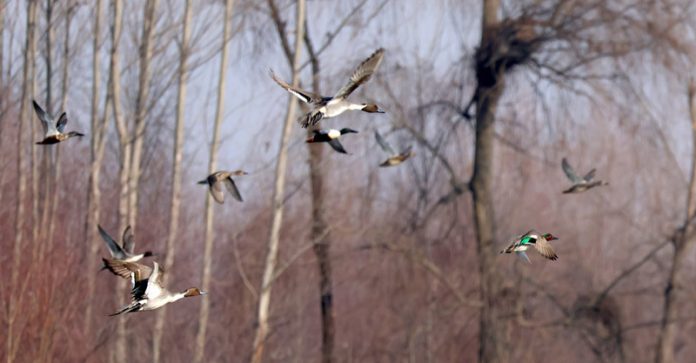Suhail Bhat
SRINAGAR, Jan 30: Poaching continues to pose a significant challenge to the migratory birds that grace the wetlands across Kashmir, despite the vigilance of the Wildlife Department working to deter poachers.
The Wildlife Department has ramped up its efforts to protect these avian guests, especially as they seek refuge in the Valley during the harsh winter months. Every year, migratory birds make a long and arduous journey from Siberia, Northern Europe, and Central Asia to the wetlands of Kashmir, covering thousands of miles.
These birds arrive Kashmir in October and remain till March. All the nine wetlands are filled with vibrant birdlife, creating a mesmerizing sight. However, the presence of poachers continues to threaten their safety, forcing wildlife employees to work round the clock to protect them.
Sajjad Ahmad, a Wildlife guard, is one such employee. He patrols the vast Hokersar wetland located on the outskirts of Srinagar daily, starting his work at 6:30 am. “I leave early to patrol and cover approximately six kilometers each day. I need to ensure no poachers or thieves enter the wetland,” he said.
Although wildlife shooting is prohibited in Jammu and Kashmir, the Wildlife Department faces numerous challenges in preventing poaching. To combat this, joint control rooms with the Forest Protection Force have been established, but there are still areas without full protection.
Naseer Ahmad, Range Officer of the Forest Protection Force, said, “In the past two months, I have seized nearly eight illegal firearms used to kill migratory birds and arrested the offenders,” he said. He assured that authorities are committed to ensuring the safety of the birds and have launched a drive against poaching.
Altaf Ahmad, Wildlife Warden of Kashmir’s wetlands, noted that the number of poaching incidents have significantly decreased this year. “We have created special teams to monitor the wetlands regularly, especially during morning and evening hours when poaching is most likely to occur,” he said.
In addition to combat poaching, the authorities are also working to protect the habitat of these birds, which has been shrinking over the decades. “Over time, silt has accumulated in the wetlands, creating land masses that have decreased the water-holding capacity of these areas. To restore these wetlands and increase their water-holding capacity, we will carry out dredging,” he added.


